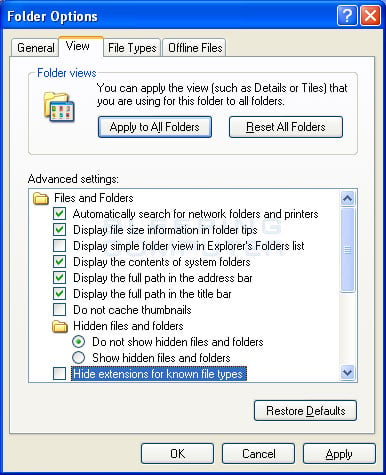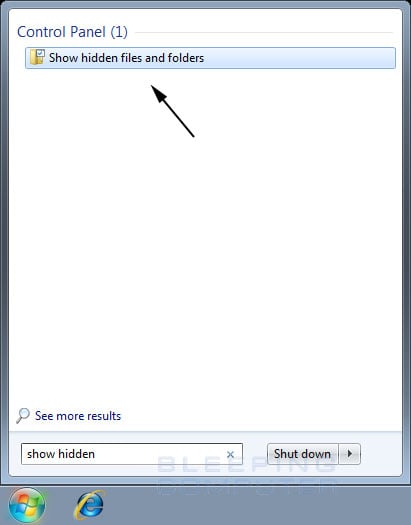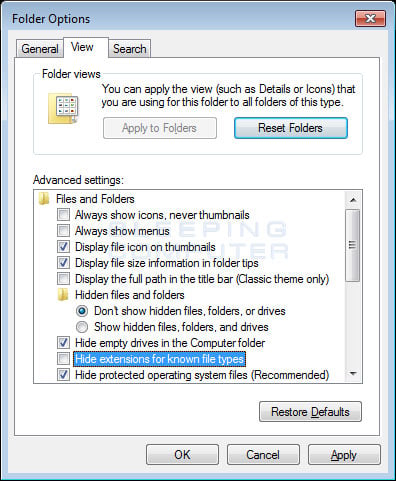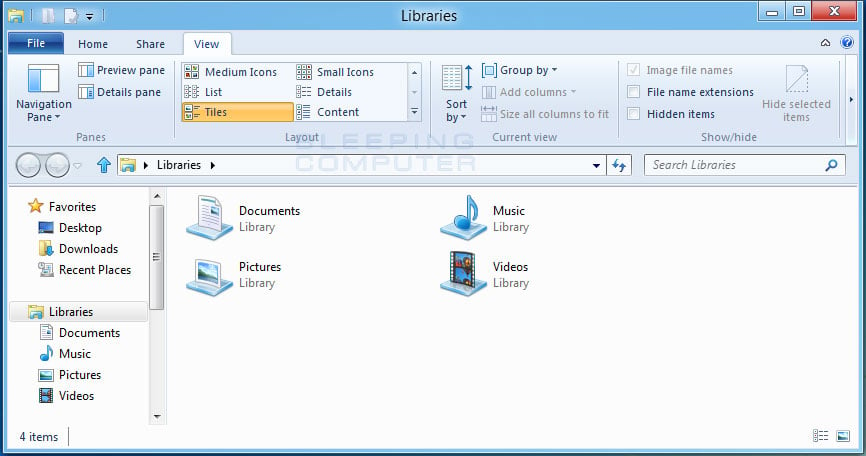How to show File Extensions in Windows
Lawrence Abrams
- September 27, 2011
- Read 242,645 times
Introduction
The default setting for Windows is to not display a file's extension, which is the last period in a file name followed by 2 or 3 letters. Therefore, when viewing files in Windows you would only see the portion of the file name that precedes the last period in it. To show what this means, if you have a file called test.doc.txt, Windows will only display test.doc. From this file name, you would then assume this is a Word document because it looks like it has a .doc extension. In reality, though, when you double-click on it, it would instead open in Notepad because its true, but not visible, extension is actually .txt, which corresponds to a text file. Even more serious is the fact that many malware creators create their infection files so that they exploit this default setting. They do this by distributing files that appear to be harmless, but are in fact an executable file that will execute when you attempt to open it.
For example, let's say you are sent an email with the zip file attachment and when you unzip it, you see that there is a file called presentation.ppt. From all appearances, this file appears to be a PowerPoint presentation, which are typically innocuous, and therefore you open it. On the other hand, if the viewing of file extensions was enabled, you would instead see that this file is called presentation.ppt.exe, which is strangely named executable and thus far more dangerous.
Not being able to see file name extensions only causes unnecessary confusion and security risks. With this in mind, this tutorial will explain how to display file extension in Windows XP, Windows Vista, Windows 7, and Windows 8.
How to view file name extensions in Windows XP
- Close all programs so that you are at your desktop.
- Click on the Start button. This is the small round button (
 ) in the lower left corner of your screen that has a Windows flag on it.
) in the lower left corner of your screen that has a Windows flag on it.
- When the start menu appears, click on the My Computer menu option.
- Your My Computer screen should open as shown below.

Now click on the Tools menu and select Folder Options....
- When the Folder Options control panel, please click on the View tab.
- You should now see the View tab Folder Options control panel as shown below.

Uncheck the checkbox labeled Hide extensions for known file types. Once this is done, your Folder Options screen should look similar to the image above.
- Press the Apply button and then the OK button.
You will now be at your desktop and Windows XP will be configured to show all hidden files.
If you have any questions about this process please feel free to post them in our Windows XP forum.
How to view file name extensions in Windows Vista and Windows 7
- Close all programs so that you are at your desktop.
- Click on the Start button. This is the small round button (
 ) in the lower left corner of your screen that has a Windows flag on it.
) in the lower left corner of your screen that has a Windows flag on it.
- In the search field type Show hidden as shown in the image below.

When you see the Show hidden files and folders listing appear, as shown by the black arrow above, click on it to open the Folder Options Control Panel.
- When the control panel opens you will see a screen similar to the one below.

Remove the check mark from the checkbox labeled Hide extensions for known file types. Once this is done, your Folder Options screen should look similar to the image above.
- Press the Apply button and then the OK button.
You will now be at your desktop and Windows Vista or Windows 7 will be configured to show all hidden files.
If you have any questions about this process please feel free to post them in our Windows Vista forum or Windows 7 forum.
How to view file name extensions in Windows 8 and Windows 10
- When in Windows 8 or Windows, open any folder that you wish.
- When the folder is opened, please single-click on the View tab. Once you click on this tab, you will be shown a screen similar to the one below.

- When the folder is opened, please single-click on the View tab. Once you click on this tab, you will be shown a screen similar to the one below.
- In this screen, put a check mark in the checkbox labeled File name extensions.
- You can now close Windows Explorer.
You will now be able to see file name extensions in Windows 8.
If you have any questions about this process please feel free to post them in our Windows 8 forum.
 ) in the lower left corner of your screen that has a Windows flag on it.
) in the lower left corner of your screen that has a Windows flag on it.








